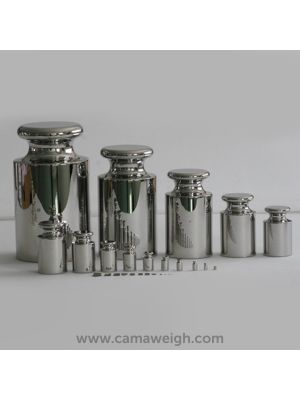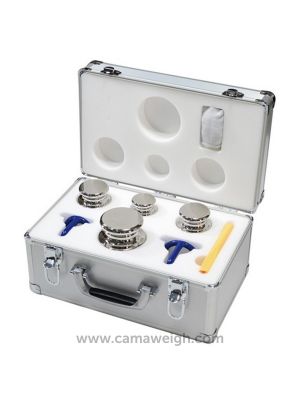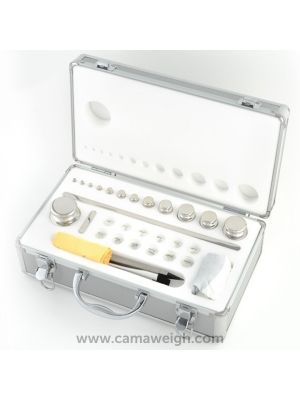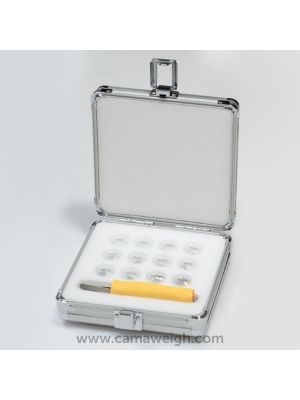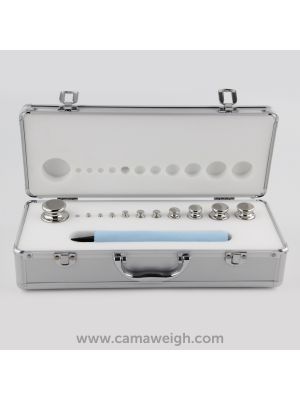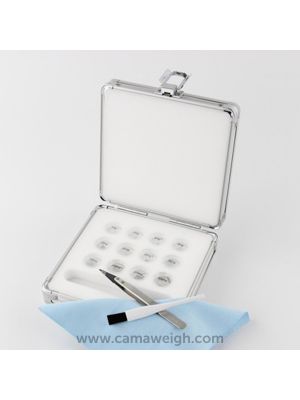High Precision Weights
Camaweigh High Precision Weights
Each weighing scale or equipment is grouped in their own classifications based on their weight class. Weighing scales can be classified as either Class l to lllL. Class l weighing scales are those which are used in the laboratories. This type of weighing scale or equipment measures weights in the milligrams unit or lower. As the Class goes further up so does the weight capacity of the weighing scales classified under them. Class lll weighing scales are those which have weighing capacity less than or equal to 30,000 lbs. These include vehicle weighing equipment like axle-load scales, crane scale, or weighbridges.
Test weights too have their own set of classifications. Test weights are classified depending on their tolerances. There are also three types of classification used; OIML, ASTM, and NIST. Each of these classifications has their specific weighing applications.
For example, NIST Class F test weights are used to calibrate trade scales. The classification of OIML test weights are E1, E2, F1, F2, M1, M2, and M3. OIML Class E1 test weights are considered the most accurate, while OIML Class M3 is the least.High Precision Weights Classification
High precision weights are test weights which are classified in OIML Classes F1 and F2. High precision weights under the OIML Class F1 are used for testing, adjustment, and the calibration of weighing scales under OIML Class l. High precision weights under this class are also used in the calibration of weights under the lower classes M3-F2. This class of high precision weights has a maximum allowable error of ±5 mg from the nominal value at 1 kg. This Class of high precision weights can also be used for calibrating weighing scales under the Class ll classification.
High precision weights under the OIML Class F2 are also used for testing, adjustment, and the calibration of weighing scales under Class ll or laboratory scales. They are also suitable for traceability of test weights under OIML Class M1 and lower. This type of high precision weights are used in the calibrating of weighing scales used in high value commercial transactions like gold, silver, and other precious metals. The maximum allowable error of these test weights is ± 16 mg from their nominal value. OIML Class F2 high precision weights are used as the working standards for external weights and built-in weights when calibrating high precision balances.
Determining High Precision Weights
There are different test weights and it is very hard to determine each of their weights without using actual scales. This is why manufacturers put markings on test weights as indications of their values. High precision test weights which are one gram and higher have their nominal values embedded on them. The Class ll high precision weights are also marked. They usually have an “F” on top of their nominal value. Another way of determining high precision weights from others is based on their material. High precision weights are made from stainless steel. The advantage of stainless steel is that it is resistant to stains and rust corrosion.
Applications of High Precision Weights
High precision weights of OIML Class F1 and F2 are used in calibrating weighing scales under Class ll. Class ll weighing scales are those which are used in laboratories. Camaweigh offers a wide range of high precision weights. You can choose from high precision weights ranging from 1 mg up to 10 kg max. Class ll weighing scales are also used in chemical, forensic, and pharmaceutical industries. In these industries, maximum accuracy is very critical. These industries are dealing with very small weights so their weighing scales are very delicate and sensitive.


 French
French Spanish
Spanish